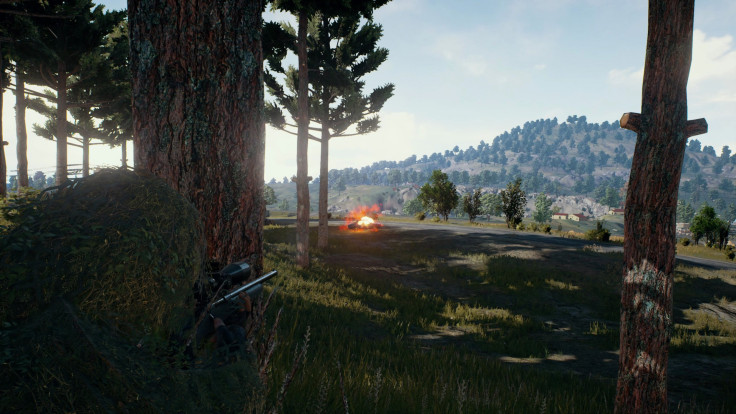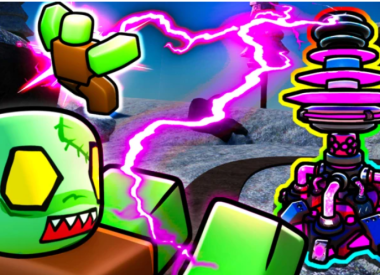PlayerUnknown’s Battlegrounds is one of the biggest surprises of 2017. There was obviously some sign a game of its ilk would have staying power, following the growth of H1Z1: King of the Kill and other PvP-focused survival games. But no one, not even the decision makers at Bluehole, realized it would take less than a year to become the most played game on Steam.
We recently had a chance to sit down with Bluehole Vice President Chang Han Kim, who doubles as executive producer for PlayerUnknown’s Battlegrounds, to discuss the future of the wildly successful shooter. We didn’t want to jump right out there with the obvious questions though. Anyone who plays PUBG wants to know what’s coming to the battle royale game, but we also wanted to know how Bluehole decides what new content makes it into Battlegrounds.
Regional awareness of the Last Man Standing concept -- at least in the areas where PUBG is finding the biggest audiences (China, Japan, South Korea and the U.S.) -- traces back to radically different source materials. Older gamers were introduced to the idea almost 17 years ago when Battle Royale (2000) hit Japanese theaters. It took more than 10 years for BR to get North American distribution, at which point younger gamers were already anticipating the movie adaptation of The Hunger Games. And those differing sources could lead to varying expectations from gamers, especially when we’re talking about the weapons and other items players might find in the game. One generation is waiting for tasers and pocket knives while the next wants tridents, bows and arrows. And those without any exposure to those films have their own ideas. So who do you appease when creating new content?
“We can’t really say that we are trying to balance the expectations of the two,” Kim told Player.One. “In the past, there’s been a lot of effort from different game developers, when they release their games in different countries, to add stuff that is specific to those regions. But we didn’t have the resources, at the time, to put in those efforts.”
He explained that the focus for PUBG was simplicity and realism. They wanted to make something accessible that felt like a true experience.
“A realistic environment, realistic gunplay and animations, with a very simple gameplay mechanic (battle royale), was the core focus we centralized our resources around,” he said. “Because of that, we don’t have any specific culture trait attached to it. So it doesn’t only work for one certain country because we just kept it simple and real.”
Bluehole’s vice president believes that lack of localization is a significant factor in the global popularity of PlayerUnknown’s Battlegrounds. The studio paid respect to Battle Royale with costumes in the game’s first set of premium loot crates; however, Kim wasn’t willing to commit to any further BR content. But if the studio isn’t drawing from the films that helped popularize its particular brand of deathmatches, how does the team decide what else should be in the game?
The answer is Brendan “PlayerUnknown” Greene, the former amateur photographer and game modder Bluehole hired to be PUBG’s creative director.
“He knows very well what our hardcore players want, especially the ones that really push for the realistic gunplay,” Kim said. “He shares a lot with the team and makes decisions based on what he knows the community wants. But at the same time, our members on the gunplay team are hardcore shooter fans. So they know what they want [in PUBG] and what other members of that community want.”
Greene has been known to offer sneak peeks of upcoming content on Twitter. He revealed the camper van coming to PUBG on the social network. He’s also announced new guns, previewed the game’s upcoming desert map and updated fans on the state of the game. But even with a creative director who is deeply embedded in the battle royale community, Bluehole isn’t immune to sinking time into ideas that don’t quite pan out.
“There are some cases where, considering the overall gameplay balance of the battle royale experience, we’re not able to add just any weapons we feel like,” Kim said. “Although there may be a weapon that is very strong in real life, by putting it in and keeping it realistic, it may have an impact on the overall gameplay balance.”
Kim declined to offer many specifics, citing a need to consult with the gunplay team, but did point to rocket launchers as an easy example of a weapon that would inevitably be a bigger disruption (to game balance) than a worthwhile addition to PUBG. Kim says launchers were tested but it didn’t take long for the team to realize they were more of a problem than a solution.
PlayerUnknown’s Battlegrounds is available in Early Access. The launch build is expected before the end of 2017 and the Xbox One port is currently slated for early 2018.
Be sure to check back with Player.One and follow Scott on Twitter for more PlayerUnknown’s Battlegrounds news in 2017 and however long Bluehole supports PUBG in the years ahead.



















